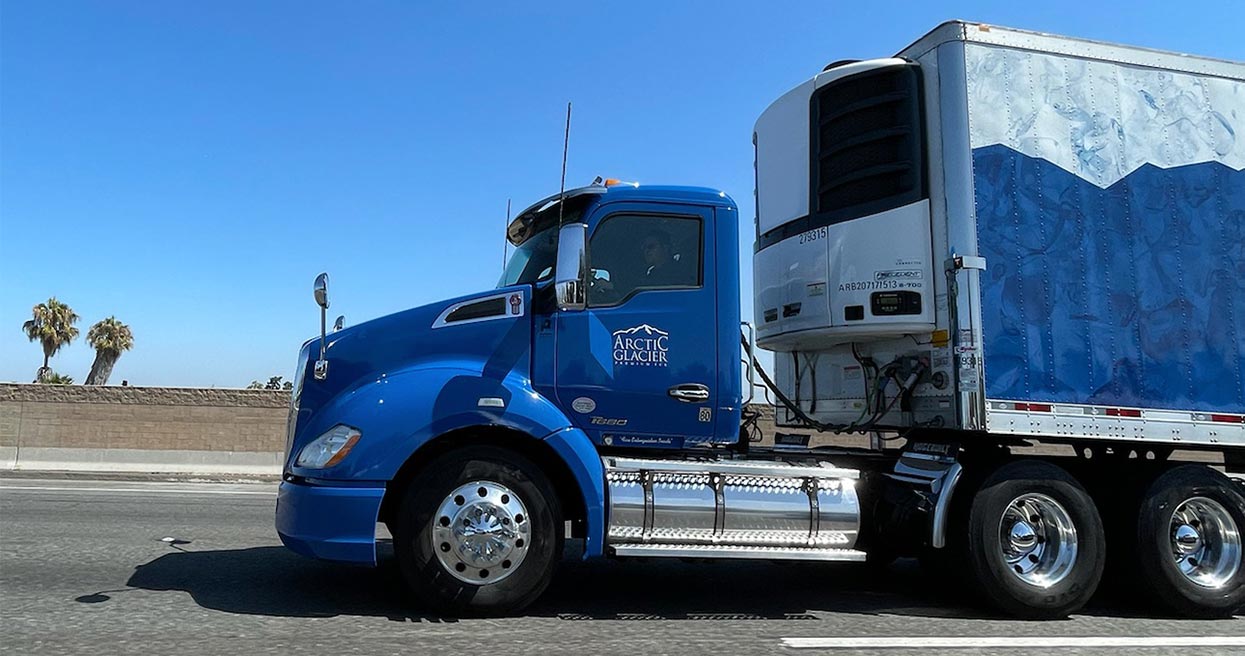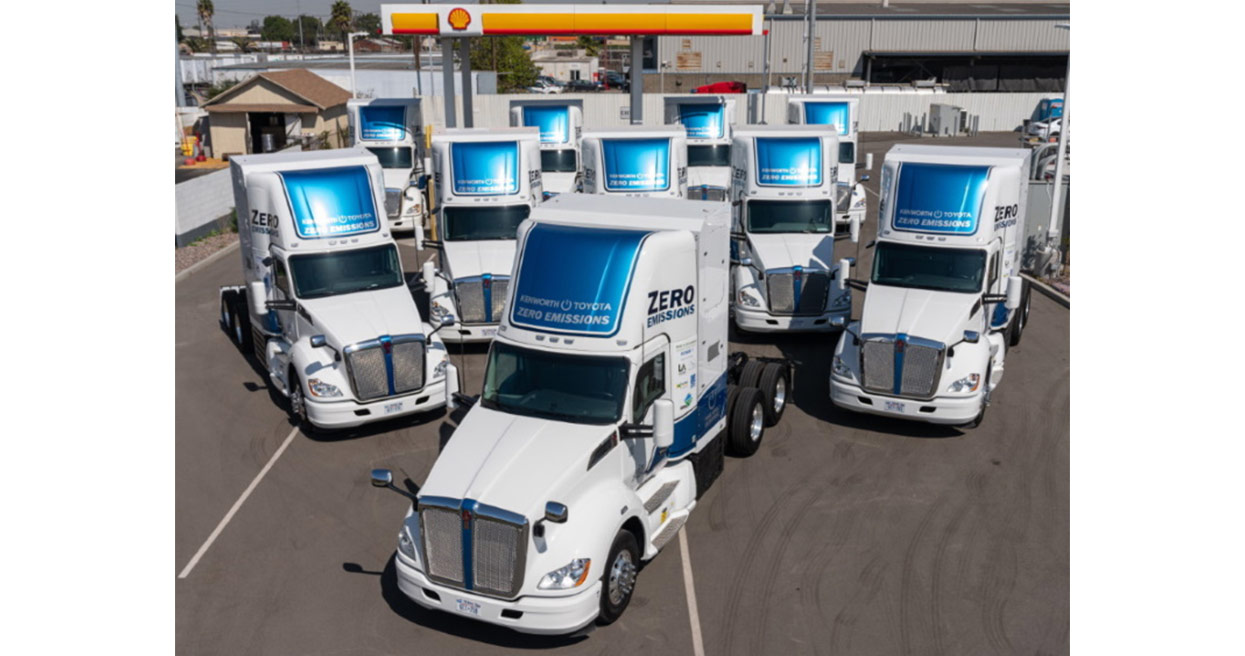Arctic Glacier Keeps the Ice Flow Moving with Leased Trucks from PacLease
You might say Dan Laurencelle has ice running through his veins. He’s been working at Arctic Glacier Ice for 33 years and knows every aspect of the business. He’s seen the company grow from a small private operation in Winnipeg, Manitoba, to one that is now owned by a private equity firm – all while becoming North America’s largest ice manufacturer and distributor with 117 locations in the U.S. and Canada. It produces more than 2 billion pounds of ice annually, and has more than 75,000 customers.
As the company’s field operations leader, Laurencelle is in charge of integrating operations during acquisitions and oversees the distribution and trucking operations at each of the company’s locations. The latter is a natural for Laurencelle — he got his commercial driver’s license in Canada on his 18th birthday and made his first delivery for Arctic Glacier a mere 45 minutes after receiving his license.
“I still have my CDL and will make runs on occasion, especially when I visit a new location,” he said. “It gives me instant credibility with the other drivers – they know that I’ve lived their life and know the importance of quality equipment. I wouldn’t want them riding in a truck that I personally wouldn’t want to drive.”
With a fleet of 500 trucks operating year-round, and another 500 rental trucks working the peak summer season, Laurencelle relies on full-service leasing companies for 95% of his year round fleet , and utilizes those same leasing companies for rental units during the peak summer season.
One of the mainstay companies has been PacLease, which leases the company more than 200 trucks – a mix of Peterbilt and Kenworth Class 6 through 8 units. “We’ve had a long-standing relationship with PacLease and we view them as a partner in our success,” said Laurencelle. “We’re not just a customer to them [PacLease] – they take our needs to heart. And it shows in how they work with us.”
With such a large fleet and so many locations – delivering in a 150-mile radius — Laurencelle said full-service leasing makes the most sense. “From a finance standpoint, leasing allows us to retain capital – putting that money toward areas of our business that provide the highest return on investment, like building new plants, or growing through acquisitions,” he said. “And, just as important, leasing assures us of properly maintained equipment. Uptime is especially critical in the late spring and summer months. Demand normally increases by 3-fold, and in addition to our normal C-stores and grocery stores, we’re also delivering to campgrounds, marinas, festivals, and other venues. That means we can’t miss a beat on deliveries. If we do, it has a domino effect since each truck will have between 12- and 25 stops. One trailer load can hold up to 5,000 bags of ice. The great thing about PacLease, is they know the Kenworth and Peterbilt equipment inside and out – it’s all they work on. And, if there is ever the need for a longer repair, they’ll have a substitute vehicle for us, so we can make sure deliveries will be completed.”
Depending upon the location, Arctic Glacier leases tandem axle Kenworth T680s, and Peterbilt 579s, pulling 48-foot trailers, or 35-foot pup trailers. Plus, they lease medium duty Kenworth and Peterbilt models (mostly Class 7 with some Class 6 sprinkled in for non-CDL drivers) with 24-foot reefer bodies.
“We have pretty standard specs for all our trucks,” said Laurencelle. “Ice is heavy, so we always gross out in weight – our specs take that into account. For our Kenworth and Peterbilt tractors, we’ve been going with the PACCAR MX-13 engine rated 455 hp or higher, depending upon the terrain. And we’ve standardized on the PACCAR TX-12 automated transmission. The drivetrain works great for our drivers.”
According to Laurencelle, the trucks average between 35,000- to 55,000 miles per year, with a few going up to 70,000 miles. “We like cycling out new equipment every seven years to ensure we are able to take advantage of the latest equipment improvements in safety (lane departure and forward avoidance for example), on-board technology and to take advantage of fuel economy improvements,” he said.
The company will soon take delivery of 18 Kenworth T680 Next Generation tractors. “I was able to see the new truck at the NPTC (National Private Truck Council) [conference] and was impressed with all the new technology,” said Laurencelle. “Then, several of our drivers got to see the truck at one of our facilities in California. Pretty excited is an understatement. They can’t wait for those trucks to arrive.”
Laurencelle said the new trucks will also reinforce the company’s image. “That’s really important to us,” he said. “Our trucks are an extension of our brand and packaging. Our merchandise wrap and trucks match. So, when people see our trucks on the road, they relate the quality we’re driving to the quality we’re delivering in our ice.”
Going forward, Laurencelle said Arctic Glacier will continue to grow and maintain its leadership in the ice industry. “We’re like a well-oiled machine,” he said. “Having a reliable fleet of trucks is a big part of our operation and being able to run smoothly. Partners like PacLease play a vital role in making that happen.”




